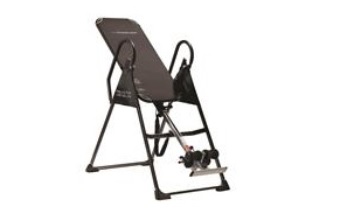Inversion therapy using an inversion table has gained popularity as a non-invasive method for spinal decompression and relief from back pain. This therapy involves hanging upside down or at an inverted angle to reduce the pressure on the spine. However, it is important to approach the use of an inversion table with caution to ensure safety and maximize its benefits. In this article, we will explore the safety concerns, proper usage guidelines, including duration and angle of incline, and the importance of an acclimation period when starting to use an inversion table.
Disclaimer: This article is for informational purposes only and should not be considered medical advice. Consult with a healthcare professional before starting any new therapy or treatment, especially if you have pre-existing health conditions.
Inversion Table Safety Concerns
While inversion therapy is generally considered safe, there are a few safety concerns to keep in mind:
- Health Conditions: Individuals with certain health conditions, such as high blood pressure, heart disease, glaucoma, or recent surgeries, should consult their healthcare provider before using an inversion table. These conditions may increase the risk of complications or negatively affect blood pressure and eye pressure.
- Pregnancy: Pregnant women should avoid using an inversion table, as it could pose risks to both the mother and the developing fetus.
- Spinal Injuries or Fractures: If you have a history of spinal injuries or fractures, it is crucial to consult a medical professional before using an inversion table, as it may aggravate these conditions.
- Retinal Issues: Individuals with retinal detachment, retinal disorders, or eye-related conditions should avoid inversion therapy to prevent potential complications.
Guidelines for Proper Use of an Inversion Table
To ensure a safe and effective inversion therapy session, follow these usage guidelines:
- Start Slowly: If you are a beginner or new to inversion therapy, it is recommended to start with a gentle angle of incline, such as 20 to 30 degrees, for short durations of 1-2 minutes. Gradually increase the angle and duration over time as your body adjusts to the therapy.
- Proper Assembly: Follow the manufacturer’s instructions carefully when assembling the inversion table to ensure its stability and safety.
- Correct Body Positioning: Securely fasten your ankles to the inversion table, ensuring they are comfortable but not overly tight. Maintain proper body alignment during inversion to prevent unnecessary strain or discomfort.
- Listen to Your Body: Pay attention to any discomfort, dizziness, or abnormal sensations during inversion. If you experience any adverse effects, gradually return to an upright position and discontinue the session. Adjust the inversion angle or duration according to your comfort level.
Acclimation Period
An acclimation period is crucial when starting to use an inversion table. This period allows your body to adapt to the new sensation of being inverted. Begin with short sessions of 1-2 minutes once or twice a day and gradually increase the duration over several weeks. Your body will gradually become accustomed to the inverted position, allowing you to extend the duration and angle of incline safely.
Conclusion
Inversion therapy with an inversion table can be an effective method for spinal decompression and back pain relief. However, it is important to prioritize safety and adhere to proper usage guidelines. Remember to consult your healthcare provider if you have any underlying health conditions or concerns. By starting slowly, maintaining correct body positioning, and listening to your body’s signals, you can safely incorporate an inversion table into your wellness routine and potentially experience the benefits of spinal decompression.
Note: The author generated this text in part with GPT-3, OpenAI’s large-scale language-generation model. Upon generating draft language, the author reviewed, edited, and revised the language to their own liking and takes ultimate responsibility for the content of this publication.





